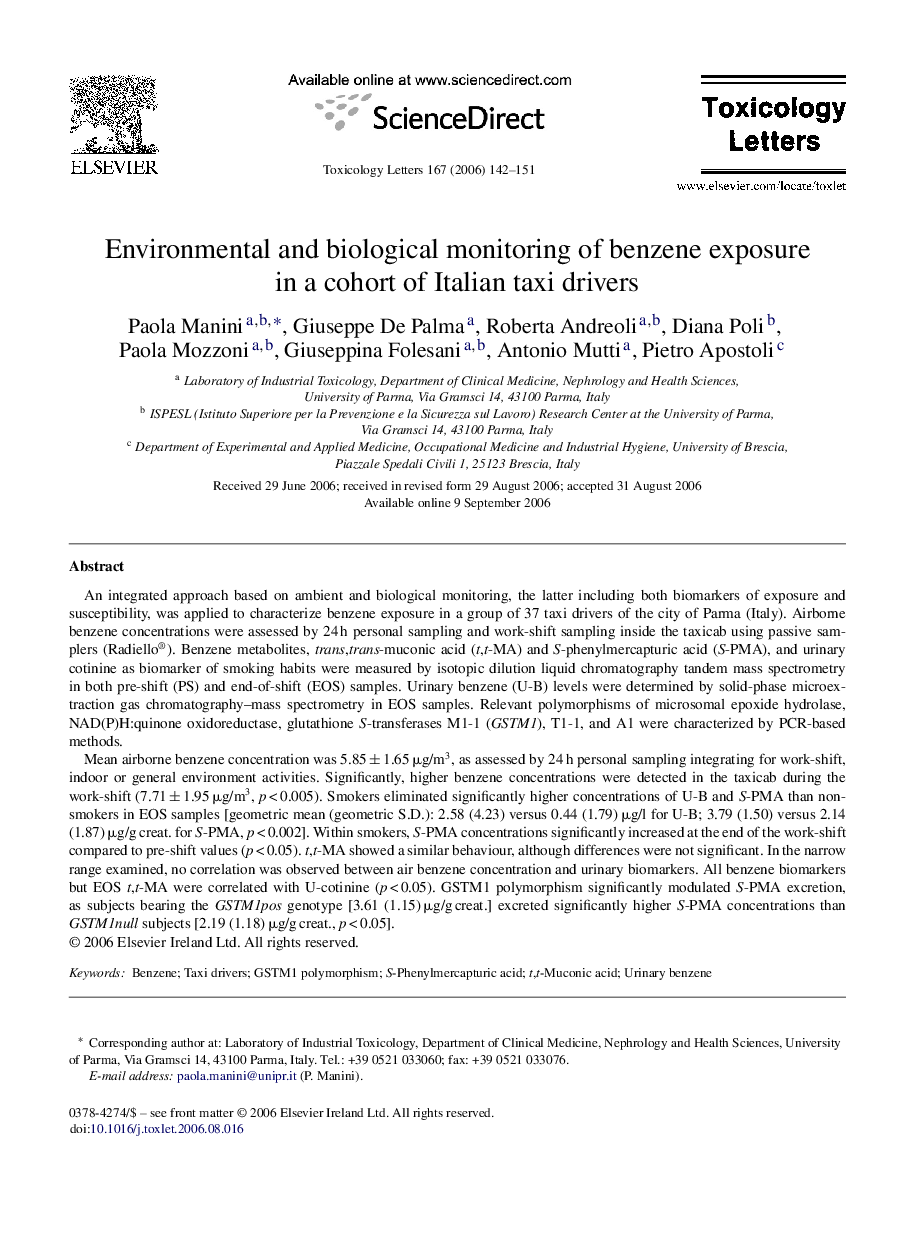| Article ID | Journal | Published Year | Pages | File Type |
|---|---|---|---|---|
| 2601072 | Toxicology Letters | 2006 | 10 Pages |
Abstract
Mean airborne benzene concentration was 5.85 ± 1.65 μg/m3, as assessed by 24 h personal sampling integrating for work-shift, indoor or general environment activities. Significantly, higher benzene concentrations were detected in the taxicab during the work-shift (7.71 ± 1.95 μg/m3, p < 0.005). Smokers eliminated significantly higher concentrations of U-B and S-PMA than non-smokers in EOS samples [geometric mean (geometric S.D.): 2.58 (4.23) versus 0.44 (1.79) μg/l for U-B; 3.79 (1.50) versus 2.14 (1.87) μg/g creat. for S-PMA, p < 0.002]. Within smokers, S-PMA concentrations significantly increased at the end of the work-shift compared to pre-shift values (p < 0.05). t,t-MA showed a similar behaviour, although differences were not significant. In the narrow range examined, no correlation was observed between air benzene concentration and urinary biomarkers. All benzene biomarkers but EOS t,t-MA were correlated with U-cotinine (p < 0.05). GSTM1 polymorphism significantly modulated S-PMA excretion, as subjects bearing the GSTM1pos genotype [3.61 (1.15) μg/g creat.] excreted significantly higher S-PMA concentrations than GSTM1null subjects [2.19 (1.18) μg/g creat., p < 0.05].
Related Topics
Life Sciences
Environmental Science
Health, Toxicology and Mutagenesis
Authors
Paola Manini, Giuseppe De Palma, Roberta Andreoli, Diana Poli, Paola Mozzoni, Giuseppina Folesani, Antonio Mutti, Pietro Apostoli,
